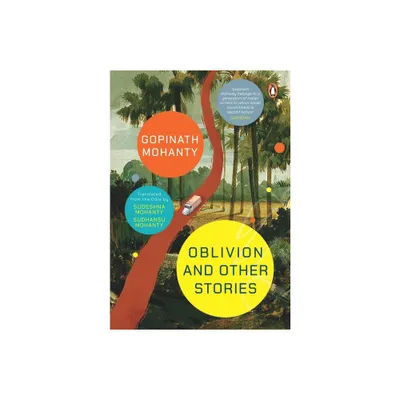Home
Oblivion and Other Stories
Loading Inventory...
Barnes and Noble
Oblivion and Other Stories
Current price: $19.99


Barnes and Noble
Oblivion and Other Stories
Current price: $19.99
Loading Inventory...
Size: OS
*Product Information may vary - to confirm product availability, pricing, and additional information please contact Barnes and Noble
Oblivion and Other Stories
is an anthology of twenty short stories by Gopinath Mohanty, the doyen of Oriya (now Odia) literature. The stories, written across a half-century (1935-1988), sample his oeuvre of writings and the variety of his themes-from 'Dã ' (mid-1930s) to 'Oblivion' (1951) to 'The Upper Crust' (1967) to 'Lustre' (1971) and 'Festival Day' (1985).
They capture the forgotten others, the banality of marginal living on life's edge-of the poor, the tribals and ordinary people-invisible in the feudal landscape of Orissa in the twentieth century.
Originally written in Oriya by the Padma Bhushan awardee, these have now been translated for the first time into English and recreate the social life of mid-twentieth century India.
The embellished past in the stories is not one of nostalgia but a full-toned portrait of society. Marginalization is the running thread: dispossession, disenfranchisement, class/caste social exclusivity and lack of education.
is an anthology of twenty short stories by Gopinath Mohanty, the doyen of Oriya (now Odia) literature. The stories, written across a half-century (1935-1988), sample his oeuvre of writings and the variety of his themes-from 'Dã ' (mid-1930s) to 'Oblivion' (1951) to 'The Upper Crust' (1967) to 'Lustre' (1971) and 'Festival Day' (1985).
They capture the forgotten others, the banality of marginal living on life's edge-of the poor, the tribals and ordinary people-invisible in the feudal landscape of Orissa in the twentieth century.
Originally written in Oriya by the Padma Bhushan awardee, these have now been translated for the first time into English and recreate the social life of mid-twentieth century India.
The embellished past in the stories is not one of nostalgia but a full-toned portrait of society. Marginalization is the running thread: dispossession, disenfranchisement, class/caste social exclusivity and lack of education.


















